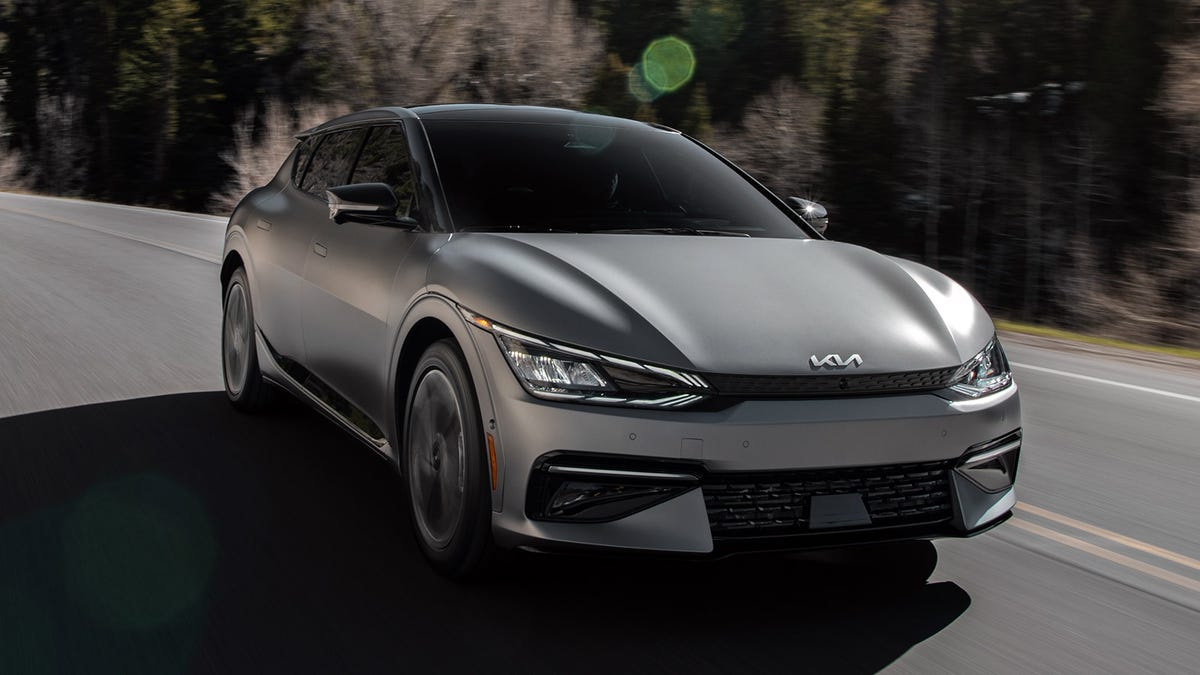Hyundai Really Got Screwed Over by the Inflation Reduction Act

Image: Hyundai
As it stands, 15 electric vehicles currently qualify for the full Inflation Reduction Act tax credit of $7,500, because they undergo final assembly in the United States. Those automakers with qualifying vehicles — most of which are American — are no doubt breathing sighs of relief right now. The rest of the lot are incensed, and arguably have a good reason to be. Hyundai is one of them.
Hyundai chairman Chung Eui-sun embarked on a trip to Washington this week to urge the Biden administration to reconsider the new criteria. Hyundai has moved swiftly into the EV space, with some of the most attractive and accessible offerings in the market — particularly the Ioniq 5 and Kia EV6. Hyundai has also invested billions into U.S. production of its EVs, but the problem is that those facilities won’t be ready for a few more years. The South Korean auto giant stands to lose serious market share to rivals in the interim.
The country’s trade officials and auto industry players are making their dissatisfaction known. Per the Financial Times:
“Upon the enforcement of the Inflation Reduction Act, Korean EVs are immediately out of US tax incentive . . . and it could have a huge impact on EV exports from Korea,” said a statement from the Korea Automotive Industry Alliance, which represents companies including Hyundai.
The trade group wants EVs produced in South Korea to receive the “same incentives” as those produced in the US, Canada and Mexico.
On Monday, the Korean minister for trade, industry and energy Lee Chang-yang said “the act is highly likely to violate WTO regulations as well as the Korea-US free trade agreement”.
“We are actively reviewing whether to bring the case to the WTO,” Lee added. “We are conveying our concerns to the US via various channels and will send a senior trade executive to the country next week to confirm the intent of the US.”
For now, final assembly in the U.S. is all that’s required for automakers and consumers to net those subsidies, but that will change starting in 2024. At that point, 60 percent of battery components must be made or assembled in North America. That portion is scheduled to ramp up over successive years, reaching 100 percent by 2029.
It’s interesting to note how different manufacturers are dealing with this issue. Despite General Motors’ protests, it stands as one of the lucky ones in this scenario, because it sells a number of EVs that are already built right here. GM also had surpassed the 200,000-vehicle cap under the old rule in December 2018, so this will mark the first time models like the Bolt could be had with a sizable federal discount in years.
G/O Media may get a commission
12% Off
Sony LinkBuds Truly Wireless Earbuds
Link up
The Sony LinkBuds Truly Wireless Earbuds are incredibly small and light, making them super comfortable, have a batter life of up to 5.5 hours with an addition 12 hours thanks to the charging case, they’re IPX4 splash-proof and sweat-proof, can be controlled via touch, and use a special design to allow you to hear other sounds when you need to.
Toyota, by contrast, also recently triggered the phase out, but doesn’t have any U.S.-built EVs at the moment. It was slow to deliver its first volume battery-electric car, the BZ4X, and wasted all of its earlier credits on plug-in hybrids. Toyota is breaking even, for now.
Tesla is in a similar boat for different reasons. While it produces its full range for North America in the U.S. and has long since surpassed the 200,000-car cap, many of its models are too expensive to fit within the new bill’s MSRP limits that go into effect next year — $55,000 for sedans and $80,000 for SUVs.
But Hyundai is in an especially tough spot. At the exact moment the company made its big EV splash with models that are reviewing very well and stood to offer big tax breaks across the board, the federal government flipped everything upside down. Financial Times notes that South Korea overall should win big as a result of the changing criteria — SK Innovation and LG Energy Solution already operate or plan to build battery plants here in the States in the coming years. But the best Hyundai can probably hope for at the moment is a break from the Biden Administration. Again, from Financial Times:
“For Hyundai, it’s a call to action: if you want to qualify for government subsidy, then bring forward your capacity in the US and do it now,” said Tim Bush, an analyst at UBS in Seoul.
He added that Hyundai was probably looking for a “waiver” of the rules as they stand. “As long as they’re making the investment [in the US] and there’s visibility that their manufacturing will scale, it’s fairly likely that an accommodation will be made.”



